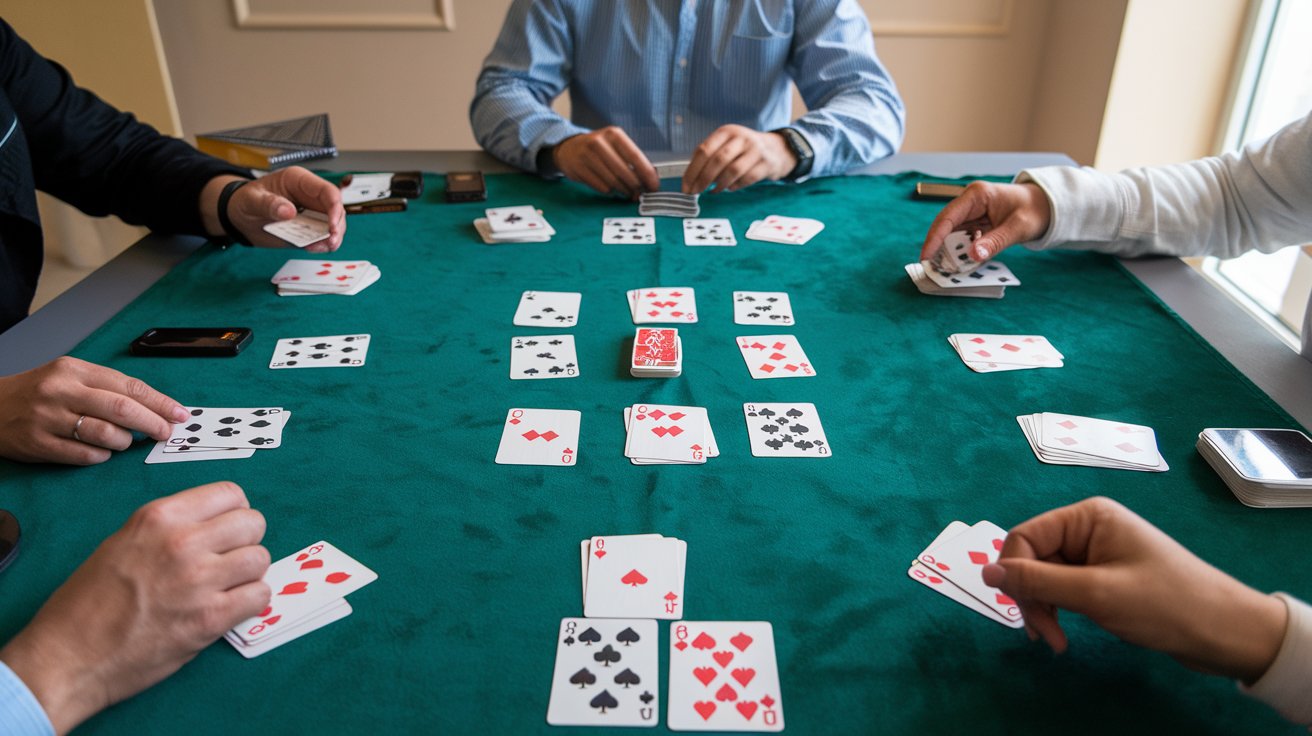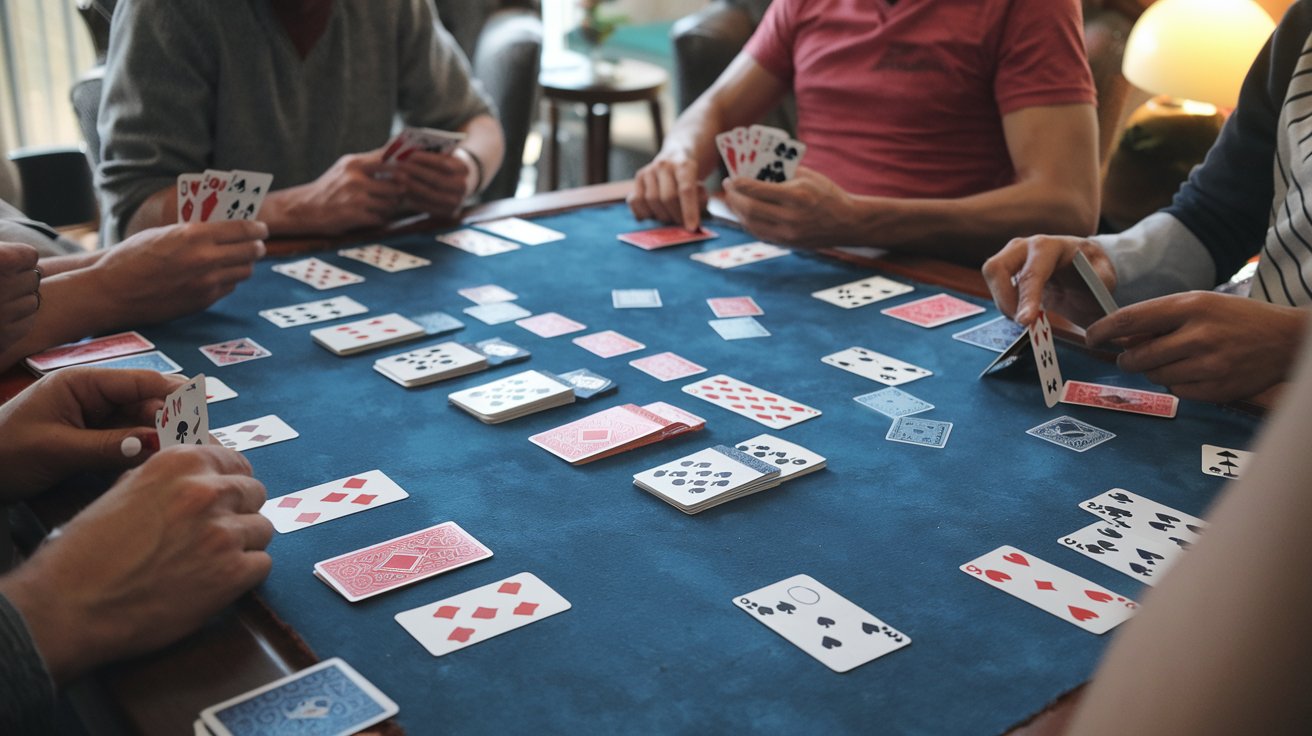Dummy Rummy is an exciting variation of the classic Rummy card game that allows you to enjoy the thrill of Rummy even when you’re short on players. Perfect for card game enthusiasts looking to practice their skills or play when a third person isn’t available, Dummy Rummy introduces a unique twist to traditional Rummy by incorporating an imaginary player—the “dummy”—into the mix. This comprehensive guide will walk you through everything you need to know about this engaging card game, from basic rules to advanced strategies.
Table of Contents
- Introduction to Dummy Rummy
- Game Setup
- Basic Rules
- How to Play
- Scoring System
- Strategies for Winning
- Variations of Dummy Rummy
- Tips for Beginners
- Frequently Asked Questions
- Conclusion
Introduction to Dummy Rummy

Dummy Rummy originated as a solution for Rummy enthusiasts who wanted to play but lacked enough participants. Traditional Rummy typically requires three or more players, but Dummy Rummy cleverly accommodates just two physical players by introducing a third, invisible player—the dummy. This adaptation maintains the core excitement and strategic elements of Rummy while making it accessible for smaller groups.
The game is particularly popular among families, couples, and friends who enjoy card games but often find themselves one player short. It’s also an excellent way for beginners to practice Rummy strategies in a less competitive environment before joining larger games.
Game Setup
To set up a game of Dummy Rummy, you’ll need:
- A standard deck of 52 playing cards (jokers removed)
- Table space for three players (two real players plus the dummy)
- Paper and pencil for scorekeeping
The setup process follows these steps:
- Shuffle the deck thoroughly to ensure randomness.
- Determine the dealer through a random card draw (lowest card typically deals first).
- Deal 10 cards to each player, including the dummy position.
- Place the remaining cards face-down in the center to form the stock pile.
- Turn the top card of the stock pile face-up beside it to start the discard pile.
- Arrange the dummy’s cards face-up in front of an empty chair so both players can see them.
With this setup complete, you’re ready to begin play. The player to the dealer’s left typically takes the first turn.
Basic Rules
Dummy Rummy follows many of the same basic rules as standard Rummy with a few key differences:
Objective
The primary goal remains consistent with traditional Rummy: to form valid sets and runs with your cards and be the first to go out (discard all cards in your hand).
Valid Combinations
- Sets (or Books): Three or four cards of the same rank (e.g., three Kings or four 7s)
- Runs (or Sequences): Three or more consecutive cards of the same suit (e.g., 5-6-7 of hearts)
Special Rules for the Dummy
- The dummy’s cards remain face-up throughout the game.
- Players take turns playing the dummy’s hand.
- A player who plays for the dummy cannot use information gained from the dummy’s cards to benefit their own hand.
- The dummy must follow the same rules as other players, including drawing and discarding.
How to Play

Gameplay proceeds in a clockwise direction, with each player (including the dummy) taking turns. Here’s how a typical turn unfolds:
Regular Player’s Turn
- Draw a card either from the face-down stock pile or the face-up discard pile.
- Arrange your cards into valid sets and runs if possible.
- Discard one card face-up onto the discard pile to end your turn.
Playing the Dummy’s Turn
When it’s the dummy’s turn, the designated player (typically alternating between the two real players) will:
- Draw a card for the dummy following the same rules.
- Arrange the dummy’s cards into the most advantageous combinations possible.
- Discard one card from the dummy’s hand according to strategic principles.
The key principle when playing for the dummy is to play optimally without using knowledge of the dummy’s cards to benefit your own hand. Think of it as playing for a third party whose success is independent of your own.
Going Out
A player (or the dummy) can “go out” when they can form all their cards into valid combinations and have one card left to discard. The first player to go out wins the round.
Importantly, in Dummy Rummy, the dummy can win a round if the player controlling its moves manages to arrange all its cards into valid combinations before either real player goes out.
Scoring System
The scoring system in Dummy Rummy follows standard Rummy scoring with a few adjustments:
- The winner scores zero points for the round.
- Remaining players (including the dummy) score negative points based on the cards left in their hands:
- Face cards (King, Queen, Jack): 10 points each
- Aces: 1 point each
- Number cards: Their face value (e.g., a 7 is worth 7 points)
- Special scoring for the dummy: If the dummy wins, neither real player gets points for that round. If the dummy loses, its points are not assigned to any player.
Typically, games are played to a predetermined number of rounds or until a player reaches a target score (often 100 or 150 points).
Strategies for Winning
Success in Dummy Rummy requires strategic thinking on multiple levels. Here are some effective tactics:
Managing Your Hand
- Prioritize completing runs over sets, as runs are typically more difficult to form.
- Keep an eye on the discard pile to identify cards that might help complete your combinations.
- Discard high-value cards early to minimize points against you if another player goes out.
- Hold onto cards that connect multiple potential combinations rather than focusing solely on completing one.
Playing the Dummy Strategically
- Make optimal moves for the dummy, even if they might hurt your personal position.
- Use the dummy’s face-up cards as information about which cards other players might be seeking.
- Analyze what cards might be most valuable to your opponent and try to avoid discarding these when playing as the dummy.
- Consider the dummy a learning opportunity to practice different strategies.
Reading Your Opponent
- Watch which cards your opponent picks up from the discard pile to deduce their strategy.
- Monitor their reactions when certain cards are discarded.
- Pay attention to how they play the dummy’s hand for clues about their own strategy.
Variations of Dummy Rummy

Several variations of Dummy Rummy have emerged over time, each adding its own twist to the game:
Hidden Dummy
In this variation, the dummy’s cards remain face-down, and the controlling player only looks at them during the dummy’s turn. This adds an element of suspense and reduces the information advantage.
Double Dummy
For players seeking an even greater challenge, this version introduces two dummy players, creating a four-player game with only two real participants.
Progressive Dummy
The dummy starts with fewer cards than the players (usually 7 instead of 10), but gains an additional card at the beginning of each round, making the game progressively more challenging.
Points for Dummy
In this version, if the dummy wins, both players receive negative points equal to the cards remaining in their hands.
Tips for Beginners
If you’re new to Dummy Rummy, these pointers will help you get started:
- Focus on understanding the basic mechanics before worrying about advanced strategy.
- Practice playing both your hand and the dummy’s hand to improve your overall Rummy skills.
- Start by discarding high-value cards to minimize potential losses.
- Watch experienced players to learn strategic approaches.
- Be patient – Rummy games involve both skill and luck, so don’t be discouraged by early losses.
- Keep track of discarded cards to make more informed decisions.
- Plan several moves ahead whenever possible.
Frequently Asked Questions
Can Dummy Rummy be played with more than two physical players?
Yes, you can adapt the game for three or more players with one dummy. In this case, players typically take turns controlling the dummy’s moves in clockwise order.
What happens if the stock pile runs out?
If the stock pile is exhausted, shuffle the discard pile (except for the top card) and turn it face-down to create a new stock pile.
Can the dummy pick up the entire discard pile?
No, just like regular players, the dummy can only take the top card from the discard pile during its turn.
Is it legal to intentionally play poorly when controlling the dummy?
While technically not against the rules, intentionally making poor moves for the dummy goes against the spirit of the game and reduces the enjoyment for all players.
How long does a typical game of Dummy Rummy take?
A single round usually takes 15-20 minutes, with complete games (multiple rounds) lasting 30-60 minutes depending on the number of rounds played.
Can jokers be used in Dummy Rummy?
While traditional Dummy Rummy doesn’t use jokers, you can certainly incorporate them as wild cards to add another strategic element to the game.
Conclusion
Dummy Rummy offers a fascinating twist on traditional Rummy, allowing card game enthusiasts to enjoy the fun and challenge of Rummy even with just two players. The addition of the dummy player creates unique strategic considerations and learning opportunities that can help improve your overall card-playing skills.
Whether you’re looking for a way to practice your Rummy strategies, teach someone new to card games, or simply enjoy a pleasant evening of cards when a third player isn’t available, Dummy Rummy delivers an engaging and accessible experience.
So shuffle up, deal those cards, and enjoy the distinctive pleasure of outwitting not just your human opponent but also the ever-present dummy. With practice, you’ll develop the tactical thinking and card-reading skills that make Dummy Rummy such an enduring favorite among card game aficionados.
Remember, the best way to master Dummy Rummy is through practice—so gather a deck of cards, find a partner, create your dummy, and start playing today!

Zareb Saleh is a journalist at Gulf Today and a ghostwriter for Gameoholic, specializing in gaming, technology, and digital culture. With a keen eye for industry trends, he delivers insightful stories that engage and inform readers.




